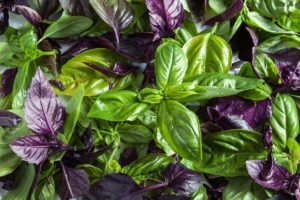The berry of life is called grapes — one of the first crops known to mankind and grown since ancient times. The grapes have become a symbol of many benefits, its images are found on ancient frescoes and ornaments, it appears in legends and fables. And all this is not just because the grapes are rich in nutrients, vitamins, antioxidants. And how beautiful is the vine, decorated with juicy bunches!
Grapes belong to the crops of warm climate. Fruit grapes grow in the open ground.
What do you need to grow grapes in the cottage?
Sunlight, warm climate, moderate moisture, earth and… love. Grapes sensitively perceives caring hands and if it is well cared for, it will please you with a good harvest. And it is very important to choose the right grape variety that will take root in your region.

- Soil
Grapes are not particularly whimsical to the soil. It grows well on sandstones, loam, limestone and so on. If the soil is clay, provide good drainage, if peat – add sand. Sandstone fertilize with compost or manure. If the soil is acidic, deoxidize them with lime: 200 g per 1 sq. m. by the Way, the grapes bear fruit well on poor lands, but does not like salt marshes and does not tolerate stagnation of groundwater in the root zone. - Water
Grapes moisture-loving, but does not like excess water. It is useful to equip the vineyard drainage system and bring water through the pipes directly to its root system. - Heat and light
Grapes like heat, but does not tolerate heat. At a temperature of +38°C, its growth slows down. Dark grape varieties are more thermophilic than those that have a light color. But despite his love of light, many varieties of fine fruit in partial shade.

- The select of varieties
The choice of grape variety is important! Here it is necessary to take into account everything: the ripening period, frost resistance of the vine, its whimsical (or unpretentiousness), “covering” or “not covering” variety (that is, whether it requires shelter for the winter). - Place to land
Grapes prefer to grow in the southern areas, so it is often planted next to the southern wall of a country house or fence. And if you plan to plant the vine is not in the southern place, need bury the seedlings in the trench at 40-50 cm So you protect the roots of the vine from cold weather. In General, there are no strict conditions for planting grapes.

Planting grapes
So, you have finally purchased grape seedlings. What’s next? And then take a shovel in hand and dig a hole: 80x80x80 cm In the center of the pit fix the peg and fill the bottom with gravel or gravel for 8-10 cm, in order to provide drainage. Then close the stones with a layer of earth (10 cm), carefully pour water and lay 3 buckets of rotted manure or humus. Top sprinkle 300 g of superphosphate, a shovel of ash and 100 g of potassium salt. Fill the pit with earth by about 1/3 again profusely and sheds water.
Around the dug-in peg form a mound. To pole tie the seedling, gently straighten its roots around the mound and sprinkle the ground so that the place of vaccination of the seedling or the place of divergence of shoots were at ground level or slightly higher (literally 2-3 cm). Sprinkle the seedling, slightly compacting the ground with his hands. Around the post pour a little humus or peat (2-3 cm tall). One caveat: in the southern regions of the seedlings made to hoe to a height of 15-20 cm to protect them from possible drying.
Subsequently, the vine will need support, which is constructed of steel wire. If you decide to organize a vineyard on the site, need plant seedlings at a distance of 1.5–2 m from each other. If you plant at the wall or at the fence, make an indentation of 40-50 cm.
Reproduction of grapes
Grapes propagated by seeds and vegetatively, that is, “living” parts of the vine. The seed method of reproduction is not suitable for suburban cultivation, so consider the reproduction of grapes by cuttings and layering, in which all the qualities of the uterine Bush are perfectly preserved.
Reproduction of grapes woody cuttings
Cuttings cut from cut in the autumn shoots vines, and you need to take a well-ripened, lignified middle or lower part of the escape. The ideal thickness of the stalk is 8-10 mm, a length of 60-70 cm be Sure to leave the cutting thicker part of the escape, which leaves the cut stalk. They subsequently activate root formation.
Now comes the most crucial moment: the preservation of cuttings until spring. To avoid mold, dip them whole for 2-3 seconds in a 5% solution of copper sulfate, tie in a bundle and place in a dark cold place, can be in the basement in a box of sand or in a refrigerator in a plastic bag.

In March, carefully inspect the planting material, discard dried and damaged cuttings, and the healthiest planted in sawdust or water, pre-treating them. In may, it is already possible to plant in the open ground.
Reproduction by layering
In the fall, select at the bottom of the vines the two most powerful layering, free them from the leaves, tendrils and stepchildren, put in a pre-dug grooves 20-30 cm deep and pricopie.

Abundantly pour, sprinkle with mulching material (peat, sawdust or otherwise) and leave until spring. After a successful wintering you will get two new vines, which should be separated from the mother plant after 2-3 years, cutting in the middle.
Care of grapes
When the side shoots grow to 10 cm, spend the wreckage, leaving 3-4 shoots on the sapling and 2 on the stalk. The ground under the Bush is always loose and free from weeds.
Fertilize the vine with mineral fertilizer three times a season. During fall feeding 1 every 2-3 years to make the soil manure (6-8 kg per 1 sq.m. of soil). Grapes table varieties fertilize more often. During the growing season, every 10 days it is watered with diluted mullein with the addition of superphosphate and magnesium: 15 liters of water 2 kg of manure, and 15 g of superphosphate and magnesium.

Each year, the grapes need to be cut, to break off, pinch. You need to break off the weak, damaged branches and partially – young shoots, immediately after the appearance of antennae and inflorescences. To grapes not stretched up, and productively developed to the side, the top of it should be annually pinched a week before flowering. When the grapes ripen, those leaves that block them from the sun should be cut off. It is important not to overdo it, remove no more than 5 leaves from each bunch.
The vine grows so abundantly that needs annual thinning in the fall. You need shears to remove young woody shoots, and those who managed to harden cut by about 2/3. Cutting spending at a right angle away from the Foundation of a fruitful escape.
In winter mulch grapes peat, humus or sawdust to a height of 5-8 cm, and the vine itself bend down to the ground and cover with spruce branches. Some particularly resistant to frost grapes in the shelter do not need.









